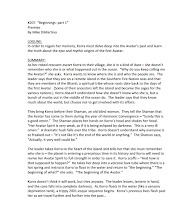Nighthawks and Alienation:
Edward Hopper with film theorists, Baudry and MacCabe (Connection with film and John Martins work, Manfred and the Alpine Witch
Hopper’s paintings can be interpreted to take the aesthetics of storyboards or comic panels through the structure of the composition, especially through the use of the perspective and colour. As Hopper was a realist, he devoted his works to capturing the interior of everyday life to depict the truth of the human condition, making the figures in his paintings seem alienated. In his piece Nighthawks [Fig 1], the audience perceive a diner with barely any customers and the corresponding street behind fading into the darkness of the night. The use of the vertical beams in the window matched with the horizontal path of the street behind it draws the attention of the viewer to peer into the café’s window. Once again the viewer has become the foreground, through the use of the bright artificial light and the size of the window panes; it makes the spectator feel as if they are watching the people in the café from outside. However this time the sense of perspective differs to that of Martin’s. This perspective is closer, making the composition more personal and instead of the audience feeling pity for the characters, the audience begin to feel emotions for themselves. It is the spectator that senses this form of isolation and questions why they aren’t in the warmth of the diner. The level of framing is level to that of an eye line further implying that the spectator is part of the painting. This is something that Martin’s painting has lost; the level of framing was on a higher scale, giving the spectator a sense of judgement on the spectator. This does work for Martin’s painting as it allows the spectator to decide whether they should feel pity or disgust for Manfred’s plead in forgiveness. Martin allows the audience to have the right to condemn their own sense of judgment on Manfred.
Hopper wanted to paint the truth and for the spectator to see the truth. This sense of truth and reality differs to that of Baudry’s thesis, even though this can still be argued to be a representation of reality, Hopper wants the spectator to perceive the truth for themselves. Compared to Baudry, MacCabe argues that reality is what you perceive; the audience form the truth through the contents of the image and the spectator can only piece together the truth from the information given to them.
“The unquestioned nature of the narrative discourse entails that the only problem that reality poses is to go and look and see what things are. The relationship between the reading subject and the real is placed as one of pure specularity. The real is not articulated- it is.” (MacCabe. Rushton, R & Bettinson, G (2010) P.57)
Therefore MacCabe interprets the image to be the reality whereas Baudry argues that the information given is a mere representation of what is reality. Baudry believes that the spectator’s situation resembles that of a dream like experience; we engage with the piece and believe the impression of reality that is woven into the composition. In this dream like state the spectator cannot do anything but absorb the information given, the only awareness that we have is what is in front of the audience. MacCabe perceives the truth of the painting alone, the form of the characters, the narrative discourse and the structure of the environment to tell this truth; this form of truth is what Hopper paints. (Rushton, R & Bettinson, G (2010) P.57 -58)
The whole composition seems to be masking something from the untrained eye, something that is being veiled by the people in the café. This attraction to the café with the use of perspective and light stops the spectator from seeing what is truly in this painting; the possible truth. If we gaze into the darkness of the street behind this café, we perceive a sense of alienation, the form of being desolate and alone, purely from the shapes used such as the dark elongated windows. It can be suggested that the street is a representation of the mundane routine, almost a sense of Deja Vu as the people in the café continue the same routine. This sense of emptiness can be regarded towards the use of Deep Space in which the composition uses space to emphasise the distance between objects and characters and any possible obstacles that are between the relationship of the painting and the spectator. The space in Hopper’s piece is separated, the left side being desolate and void of life with the right containing light and people conversing inside the diner. This sense of space makes the figures seem detached; they are unaware of the world outside as they are too engrossed within their own personal worlds.
Without the use of the reflection on the windows the painting seems to absorb a sense of interference. It makes the outside world daunting and foreboding with the use of the darkness waiting patiently on the other side of the glass pane. If the reflection had been included the use of the dark theme of a shady occurrence in the background would be lost. This can be interpreted that this is exactly why Hopper has not included the reflections, to create this odd sense of perception.
 |
| [Fig 1] Nighthawks Edward Hopper 1942 |



























